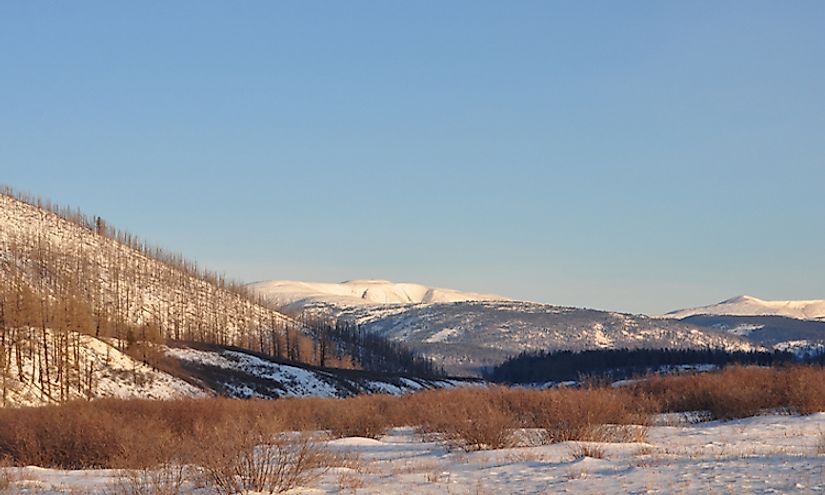UNESCO World Heritage Sites In Mongolia

Mongolia has only four UNESCO World Heritage Sites one of which is a natural one. The sites are important historical, cultural, and natural preservation sites that hold relevant ancient history significant to the people of Mongolia and Asia, in general. These sites have an important archaeological value which helps in determining the way of life, customs and beliefs of the ancient people besides understanding their unique interaction with the environment. The settings of these sites are important homes to rare and outstanding flora and fauna of Mongolia.
UNESCO World Heritage Sites In Mongolia
Great Burgan Khaldun Mountains
The great Burgan Khaldun Mountains and surrounding sacred landscape is a cultural world heritage site inscribed by UNESCO on July 4th, 2015. The site is part of the Khan Khentii Strictly Protected area and is considered the most sacred mountain in Mongolia as it was designated by Genghis Khan who is also believed to have been born and buried there. The site holds an important traditional and cultural importance of mountain and sun (nature) worship practiced by the Mongolians. The sacred mountains and their surrounding environments offer tourist attractions for pilgrimage rites as well as for the unique biodiversity of flora and fauna supported by the mountain and surrounding environments.
Mongolian Altai Petroglyphic Complexes
The petroglyphic Complexes of the Mongolian Altai is a cultural world heritage site composed of ancient rock carvings and funeral monuments that are as old as 12,000 years and provide a complete documentation of the interaction between pre-historic North Asians and their environment. The petroglyphs are important in the reconstruction of the history of the ancient Mongolians and their way of life. The complex has three rock art sites including Tsagaan Salaa-Baga Oigor, Upper Tsagaan Gol, and Aral Tolgoi. The complex was inscribed as world heritage site by UNESCO in 2011 and has remained unchanged by human and animal activities due to its remoteness and inaccessibility.
Orkhon Valley
The Orkhon valley is a cultural world heritage site in Asia pacific inscribed by UNESCO in 2004. The cultural landscape is located along the banks of the Orkhon River and stretches 320km. The site represents the nomadic way of life that has been evolving for more than 2000 years. The valley includes some monuments such as the ruins of Khar Balgas, the ruins of Gengis Khan’s capital of Karakorum, Erdene Zuu Buddhist monastery, Tuvkhun Hermitage, remains of Ogedei Khan’s residence and the Ulaan Tsutsgalan waterfall. The valley served as an important social, economic, political and cultural center for different periods of nomadic people whose evidence of existence is in the remains and ruins in the valley. The nomadic way of life is a significant influence to the Mongolians who consider it a harmonic interaction with the natural environment.
Uv’s Nuur basin
The Uv’s Nuur basin is a natural world heritage site inscribed in 2003. The State Nature Biosphere Reserve is one of the enclosed basins of Central Asia composed of twelve protected areas (seven in Mongolia and five in the Tuva Republic). The basin is a home to a rich biodiversity of flora and fauna including the endangered snow leopard, mountain sheep and the Asian ibex, the rare gerbil, jerboas and the marbled polecat. The basin has remained intact for a long period and has more than 40,000 archaeological sites as well as ancient nomadic tribes such as Turks, Huns, and Scythians.
Impact Of The Sites On Tourism
The inscription of world heritage sites in Mongolia has given them international recognition thus attracting tourists from all over the world. These sites attract tourists for their history and cultural importance as well as the living biodiversity within their landscapes.
UNESCO World Heritage Sites In Mongolia
| UNESCO World Heritage Sites in Mongolia | Year of Inscription; Type |
| Great Burkhan Khaldun Mountain and Surrounding Sacred Landscapes | 2015; Cultural |
| Mongolian Altai Petroglyphic Complexes | 2011; Cultural |
| Orkhon Valley Cultural Landscapes | 2004; Cultural |
| Uvs Nuur Basin | 2003; Natural |











